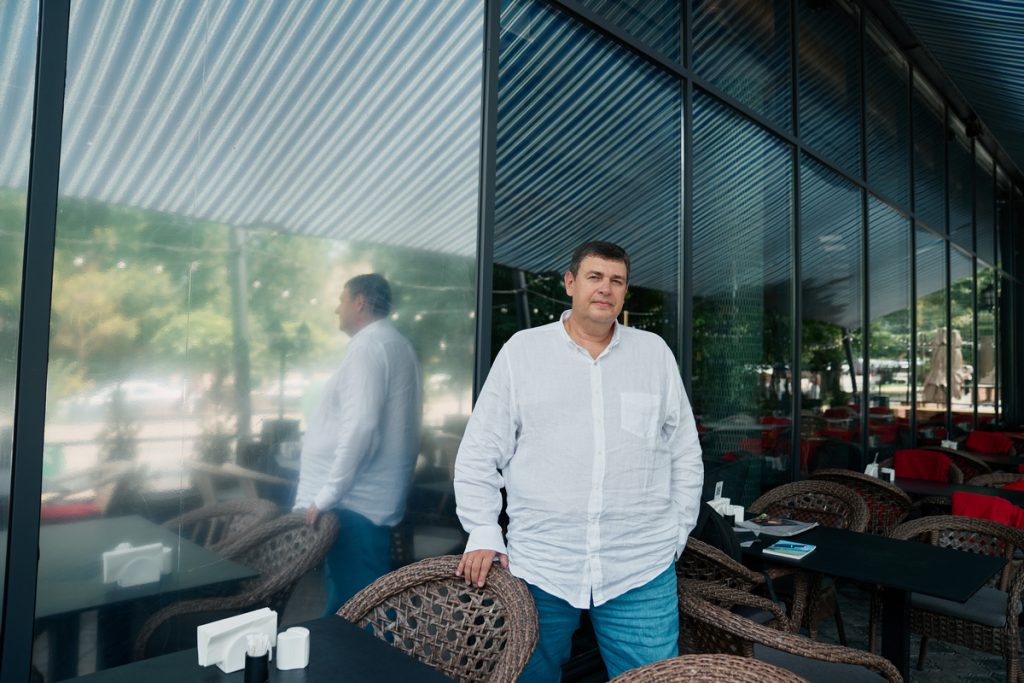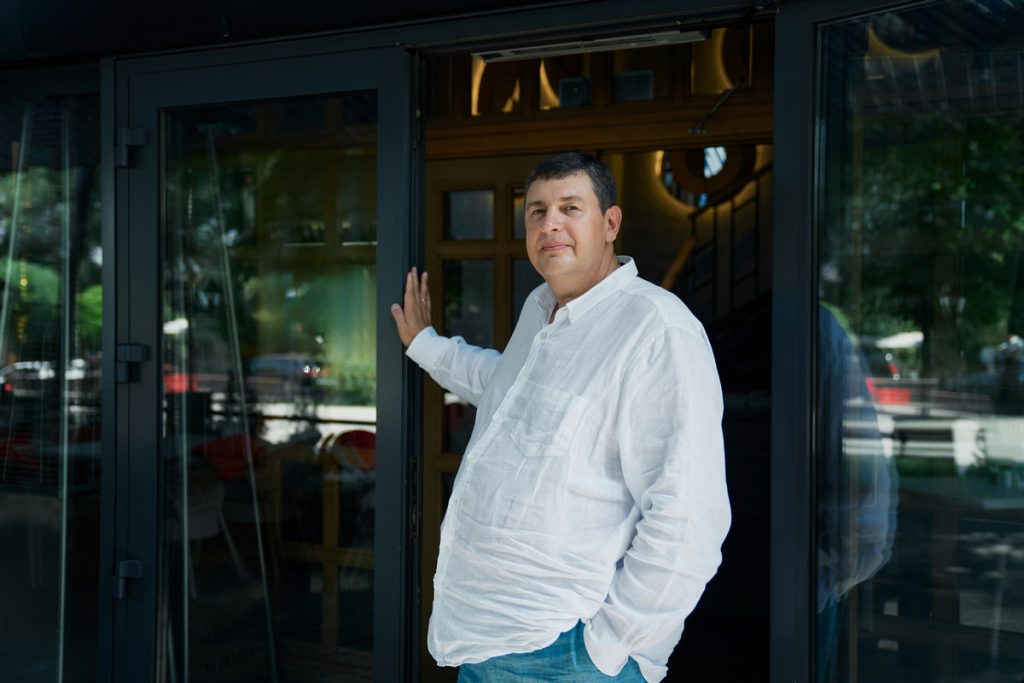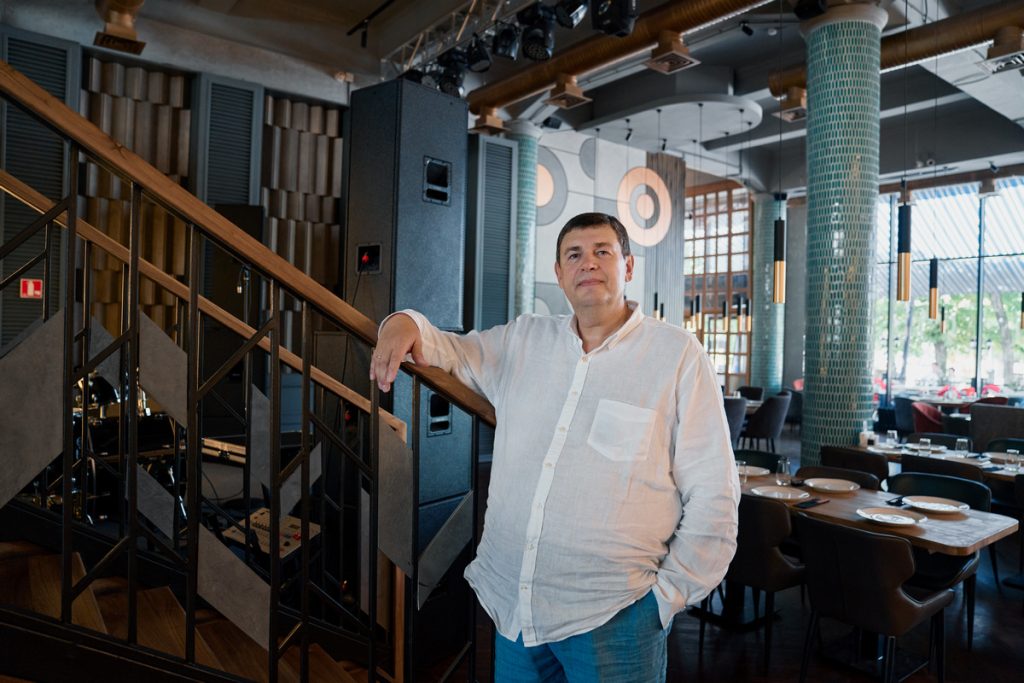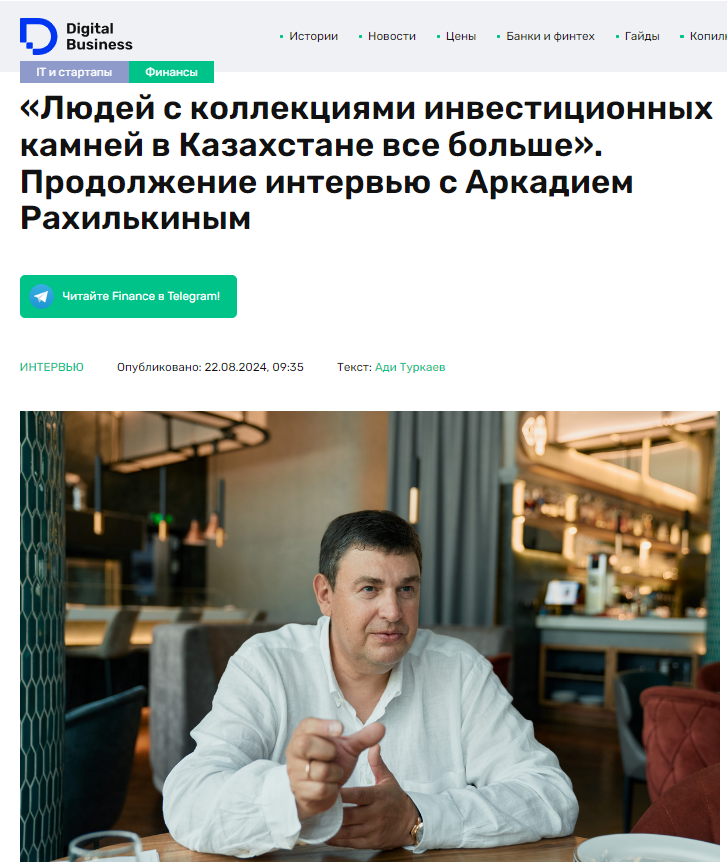Three bright quotes from an interview with Arkady Rakhilkin
About 30 tons of diamonds are mined worldwide per year. And, for example, only 4 kilograms of investment sapphires or rubies are mined per year.
Mountains of colored stones lying in the windows of jewelry stores are definitely not for an investment collection!
The minimum price for an investment stone starts from 20 thousand dollars.
What are investment gemstones?
For centuries, people have wanted to leave a legacy. Legendary warriors were ready to lay down their lives on the battlefield, but to remain in history. Musicians, painters and sculptors created masterpieces for the next generations to enjoy art. Entrepreneurs dream of creating companies and products that will last forever. And every head of a family dreams of leaving something valuable to their children and grandchildren, so that they can live a better life and fulfill their dreams. For thousands of years, people have passed on a legacy in the form of colored gemstones, from generation to generation. Real estate deteriorates, the colors on paintings can fade, but a gemstone is not affected by time.
Like gold and metals, gemstones have the ability to survive for centuries. They are not subject to corrosion, salt water, oxygen and sunlight cannot harm them. A stone can lie untouched for centuries even on the seabed, without losing its beauty, magnificence, without losing its value. For centuries, this quality was used by royal families and nobles to preserve and transfer wealth, all symbols of power – the crown, jewelry, scepter were decorated with precious stones as a symbol of wealth and power. They were the object of hunting for swindlers and thieves, replacing court stones with fake ones. Also common example are the church religious jewelry, as seen in museums, most stones are fake, stolen and replaced over the centuries because kings took them to finance their war. Best example is napoleon who took many stones from the ornaments out to pay his growing army.
However, not every colored gemstone is an investment.
The key word for understanding is rarity, only a rare stone is considered an investment. And rarity is determined by a combination of properties that are recorded in the stone’s passport – a gemological report. In fact, the youngest precious stone is about 70 million years old. And the oldest is several billion. In fact, nature has been working on the creation of these masterpieces since the creation of the Universe.
In total, more than 150 stones can be classified as precious. Of these, only 10% are significant in this industry. Usually everyone knows about the big three: ruby, sapphire, emerald. Legends are made about them, there are thousands of photographs, stories, songs. In the last 50 years, they usually talk about the
big six, where spinel, paraiba tourmaline and tsavorite are added. In total, the big dozen also includes aquamarine, tanzanite, morganite, peridot, tourmaline, Chinese garnet.
But diamonds and brilliants can also be several million or hundreds of years old?
A diamond is ordinary carbon and despite the aura of romance around it, it is an exchange commodity, even having its own index. Its price is determined by supply and demand in the jewelry market. But jewelry is more about art objects that bring joy, but not about investments. The fact is that when creating jewelry, aesthetic requirements and compliance with the designer’s idea are imposed on the stone to a greater extent. The cost of jewelry largely depends on the complexity of the jeweler’s work, as well as the popularity of the jewelry brand. It is impossible to sell jewelry for the same price as you bought it, unless it contains an investment stone.
Only something that is truly rare can be valuable. About 30 tons of diamonds are mined worldwide every year. On the other hand, the cost of mining high-quality colored gemstones is measured in kilograms. For example, only 4 kilogram of Mozambique rubies are mined and only about 30 stones over 5 carat in excellent quality are cut each year.. They are among the most expensive colored gemstones in the world. This natural scarcity provides a real hedge against inflation. That is why the price in carats of investment colored gemstones hasn’t fallen in the last hundred years. Nature does not produce them anymore. And only 2-3% of this mined amount fits the investment category in terms of color, clarity, weight and cut.
The most important thing is that each stone is absolutely unique and rare, like the retina of the eye and a fingerprint. And there is no standard for investment gemstones yet. Therefore, they are not a commodity. And the times when colored investment stones are mined from the earth in large pieces are coming to an end. At the same time, over the past 100 years, their value has not fallen. In practice, this is an ideal protective material asset.
Where are such stones mined?
In different countries, for example, in Burma, Tanzania, India, Brazil, Colombia, Zimbabwe, Mozambique, Sri lanka. Mining of stones in mines is carried out only manually, as hundreds of years ago. In the retail industry, they work only with cut stones. Because anything can happen to an uncut stone during cutting.
How to determine that a stone is rare and an investment?
There are two specialists who confirm that a stone is an investment. The first is a gemologist. He confirms that under a certain impact, the stone reveals its characteristics, which are recorded in the certificate. It indicates the color, cut, weight, name of the stone, place of origin and if the stone is treated. These are the main parameters that determine the value of the stone. Then the gemological report is sent to an expert appraiser. In Europe, the assessment functions are transferred to certified specialists sheets of the Chamber of Commerce and Industry under oath. And he already forms a report on the assessment on the date of receipt of the physical stone and gemology. These two reports constitute a full-fledged passport of the stone.
In Europe, the turnover of such stones is official. It allows people to keep part of their capital in colored investment stones, the value of which is growing every year. Based on these reports, the stone has a clear assessment at the current moment in time and it is a full-fledged protective investment asset, although it is not a stock exchange asset.
That is, another protective asset. How is it different from gold?
This is an extremely compact and super-dense investment item. Rubies worth 2 million dollars can be placed in one matchbox. Gold worth a million euros will weigh 25 kg. In addition, the turnover of gold is recorded and regulated by the state. The state is not interested in precious colored stones, except as an accounted asset. Because it is very difficult. There are no experts. Yes, there are laws regulating their turnover, but for now people buy and sell them as a regular asset, paying taxes, no special excise taxes.
If people invest in both gemstones and gold, then this is good. Because when they suddenly need money, they will sell the gold and leave the stones in the portfolio. Therefore, gold complements the portfolio. It is easier to turn into money, but it is also more volatile.
For what years is it recommended to keep capital in stones?
The minimum storage period recommended for this investment is 5 years. During this period, the price will most likely increase enough to cover any brokerage costs and preserve the value. This is the main task – guaranteed preservation of value. Of course, the stone can greatly increase in value – for example, Burmese rubies have grown by 80% over the past year. However, let’s not forget that the main function of a protective asset is to preserve value, and the increase is a pleasant bonus along with the aesthetic enjoyment of the asset itself.
In Europe, it is now extremely fashionable and popular to leave a stone as an inheritance. People are irritated by instability – economic, geopolitical, general uncertainty about the future. Imagine that there is this stone that will save you during an earthquake, when the only necessary housing is destroyed, when it is impossible to live in the previous place and you will not be able to take anything with you except your passport and this stone, which will allow you to live for some time in an unfamiliar place and start building a new life.
Do you need a broker here too?
A special license is not required here, but there are few notable players who can buy and sell investment stones. Here, it is a question of narrow specialization, reputation and the ability to find a real investment stone, and not one used in jewelry. It is also very important to correctly formulate an investment strategy when forming a collection of several stones and other assets in a portfolio.
Searching for and filling a collection can take from 1 to 3 months, as we remember – colored investment stones are rare ones that have the ability to preserve and grow in value. That is why the mountains of colored stones lying in the display cases of jewelry stores are always available – this is definitely not for your investment collection!
When we find a stone to buy, it must first be assessed by an expert gemologist who will confirm that the stone has exactly the value that the buyer ordered. Here the risk of error lies with the broker. After confirming the gemological origin and parameters, it is time for the assessment. And in the same way, a separate independent specialist confirms the retail price with his certificate and report. At this stage, the risk again lies with the broker, since sometimes inclusions are found inside the stone that are invisible to the naked eye, significantly reducing the cost. And only after this does it become clear to which category the stone should be classified – investment or jewelry, and it goes to the buyer. The appraiser also uses industry statistics and sales data from closed databases. This is what takes several months.
For example, rubies have grown by 70% over the past year. Why did this happen? In Burma – a key supplier of rubies in the world – they stopped mining large stones. And these features are not widely known. For example, morganites have also grown by 20-30% over the past year. The role of a broker is important here, we help to create a diversified collection, the main task of which is to preserve the value not only for a short period, but also possibly for decades. Therefore, it is not recommended to buy only one stone. The key concept is portfolio diversification.
For example, there is such a stone – tanzanite. Sky-violet-blue, it is more beautiful than sapphire. It was discovered only in the 1960s. Its age is 400 million years of stone. In the movie “Titanic” it played the role of the Eye of the Ocean diamond.
Now its price is stable. The only place in the world where it is mined is 53 kilometers from Mount Kilimanjaro. The reason is that several families who own the deposit do not disclose information about reserves and production volumes. And it may happen that in a few years this information will be revealed and it will turn out that the reserves are depleted. And the price will soar several times, compensating for what it stood at, instantly. This is what happened with rubies and therefore there is a high demand for tanzanite – there is a possibility of a sharp increase in price.
How to be sure that the certificate is for this particular stone?
With our product, the buyer can always be sure that whoever transports the stone, and wherever it is stored, this is the very stone that corresponds to the appraisal documents and gemology. This is the principle of four eyes (two independent employees), accompanying any operations to move the stone. When the stone is removed from the storage, this process is completely filmed on video in 4K quality. In addition, the delivery process is filmed on video. As soon as you hand over the stone to the transport company, they are then responsible for its safety and this delivery is always insured.
We have partners who can certify that the certificate number and gemology number fully correspond to the papers that come with the stone. The investor can open the package or store it in a safe. But when it needs to be sold, the stone must be re-evaluated and a gemological report and evaluation obtained. And for this, the stone must be taken to the Chamber of Commerce and Industry to an expert. We do not recommend keeping precious stones in a collection for less than 5 years, this is not a speculative asset. This is a long-term investment.
How much will it cost?
The minimum price of an investment stone is from 20 thousand dollars. It is our product, which has all the certificates, evaluation, packaged in a special way, with access to the database, its own ID, that guarantees that you are buying exactly the stone that is indicated in the papers. By the stone number on the package, you can always check the authenticity of the certificates that were issued to you in the online database. Usually, investors store stones in specialized duty-free storage facilities or in safe deposit boxes.
How to transport them abroad?
If you import them to another country, you must pay customs duty. Therefore, it is more profitable to use storage warehouses, for example, in Switzerland, Liechtenstein or the UAE. You can store your stone, receive an increase in value, and at the moment when you need to sell, you sell it right there. Accordingly, you are officially exempt from paying VAT.

How old is this industry?
Thousands of years. They just never were and are not now an exchange commodity. Previously, there were stone specialists who assessed their value, now this process is more technological.
Few people have protective assets, mainly interested in medium-term investments from 2 to 5 years. Here, five years or more are recommended. Because then you will definitely earn, and not just save capital. On average, this is from 15 to 25% per year. For example, emeralds have frozen in price now. Sapphires too. Often this is due to market sentiment. For example, ruby, morganite, peridot, Paraiba tourmaline have increased in price. Unexpectedly, the world has become interested in these stones. That is why it is necessary to make a collection of stones to get a protective asset with the possibility of value growth.
Basically, the price of stones begins to rise when it becomes known about the depletion of deposits. For example Tanzanite is only in one deposit in the world. And everyone understands that something can happen now, and there will be no more of them. Only those in hand will remain. And the price will immediately increase 3-5 times. There is also excitement here, there are also emotions here. Rarity for bigger sizes made prices grow up to a point where these stones became collector-stones
How to sell stones?
For this, the stone is re-evaluated. If the package has not been opened, nothing needs to be done. Then it again participates in the same turnover and there must be demand for it. This is done by the broker. He will take his brokerage commission, but in general the process is the same as with any asset.
And in Kazakhstan, will grandparents be able to leave stones as an inheritance?
Of course! At the moment, Kazakhstan is not the largest market, but the number of people with collections of investment stones is constantly growing, as is the interest in them. The turnover of stones in Kazakhstan is also complicated by the fact that there are no government agencies that issue licenses for the evaluation of precious stones.
Hence, transactions mainly occur from hand to hand, and the evaluation is carried out by the brokers themselves or “so-called” appraisers. Standardization of this market is very important, but at the moment we have to use European institutes of gemology and appraisal. Those investors who have a sufficient number of stones on hand, in the last year used the opportunity and reported to the state, entering them into the declaration. To do this, they had to be assessed, they became a legal asset and participate in the calculation of the investor’s wealth. This is a very important point, which I never tire of reminding you of – the investment portfolio must consist of assets of legal origin, declared, and therefore the subsequent natural the cost and sale of such an asset is extremely simple and will entail the need to pay only the capital gains tax (if applicable).
Is it possible to buy a part of a stone?
Here the answer is positive and simple – yes! Through the tokenization of stone collections, creation from a digital image in accordance with applicable standards. As an example – in the USA, the most famous ski hotel in Aspen was tokenized, thus they attracted new capital. There is a tokenization of Picasso’s painting “Young Man in a Beret”, which costs 5 million dollars. And there were people who own a part of the painting and invested 50 thousand dollars each. Legally, this is formalized by smart contracts. You get exactly the same rights, only digital. For Kazakhstanis, this is not new – electronic document management and Gov-tech work very well.
The main issue in the tokenization of colored gemstones is standardization. Each stone is unique, unlike diamonds, which are distinguished only by weight. Gold has a troy ounce. Oil has a barrel. Diamonds have carats. And colored gemstones have no standard. And this is what the world is currently working on. MiCa (European regulation of crypto assets) has already been implemented in Europe.
Therefore, our plans are to follow the rules of this, the only regulated cryptocurrency market in the world, and implement the tokenization of colored gemstones, as well as financial instruments based on this. We plan to introduce a Token on precious stones. This will be an index of 12 most important stones, and one digital carat (or index) will be formed from them using an algorithm. To simplify, tokenize each of the 12 stones and make an index out of them, similar to an ETF, on a weighted average basis of the shares of each stone.
This process is called digital melting. I will not go into details, the process is technologically and legally complex. But when we do this, people will have the opportunity to buy a piece of a digital carat for $ 100.
And the token itself is already a cryptocurrency. For example, Mastercard has already approved our portfolio startup S1lk Pay to issue a crypto card, in which the wall between fiat currency and crypto will officially disappear. That is, it will be possible to easily transfer from fiat to crypto and back in one card, and the standard for settlement is stablecoin. We can already offer this product to crypto exchanges and other B2B clients. However, we want to go even further and offer people to use our cards not only for cryptocurrency payments, but also to save their capital. Get a so-called security card, secured by precious stones. That is, a person does not have $ 20 thousand to buy a stone, but has the opportunity to buy a part of the stone for $ 100. And then every year a person will participate in the growth of value on an equal basis with wealthier investors. This will dramatically democratize investments in precious stones, which is in line with our commitment to the concept of sharing economy.
A person will be able to accumulate tokens, and sell them at the right time. They will be equated to the value of precious stones one to one. And since stones are becoming more expensive, so are tokens. We will provide practically the same tool as a stablecoin, backed by gold.

What are your ultimate goals?
We want to create a stablecoin, which will be backed one to one with a Token, which in turn is backed by colored gemstones. After all, a stablecoin has become an instrument for an account in many countries. And by and large, it will be one of the few backed by real assets of cryptocurrencies. For example, recently in the UAE, a stablecoin was introduced, equal to the dirham, the process in this direction is going quite quickly in the world.
We are starting with precious stones, but our goal is to democratize this market, fill it with liquidity and so that any person who wants to save money in precious stones, but does not have a minimum amount, has such an opportunity. Our goal is also to enter the institutional market. For which it will be necessary for banks and insurance companies to accept stones as collateral.
Despite the existing legislation in Europe, this project will require a large number of legal expenses, at least several million dollars, but the main thing is to develop a standard and understanding among millions of people that colored stones are a protective asset, why they do not fall in value, and they can be passed on as an inheritance. And in the end, when the entire infrastructure is built, this stablecoin, backed by precious stones, people will be able to use in their transfers across the borders of any state to help loved ones and relatives. Technologically, this requires introducing a digital carat standard, standardizing it, tokenizing it and embedding it in our cards. But the legal and institutional path is quite expensive and slow. But we are confident that we can handle it – the world has become very unstable, in which transfers, investments and inheritance are expressed in dollars. The good old idea of a well-known material asset (precious stones) ) in its digital form seems feasible and in great demand to us.
What is the size of the investment colored gemstone market?
We estimate that based on transactions at the largest auctions Sotheby’s and Christie’s, it amounts to tens of billions per year, but this information is not disclosed.
Apart from Europe, where are the other developed markets?
If we are talking about cryptocurrency and tokenization of precious stones, we start with Europe. Because they have already adopted legislation and our key partners for tangible assets and legal support are located there. In the USA, we plan to use contractors who will deal with tokenization.
There are also markets in China, India, and the Middle East, we are ready to come to them later. For example, in China, ICOs were already legally prohibited until recently. Now they are reopening these markets because they do not want to lag behind international trends. We want to work for the middle class, who want to save in something reliable and pass on their savings to their children and grandchildren.
Of course, there are no ideal assets that are not subject to risks. In precious stones, this is complexity, lack of standardization, impossibility of independent immersion in the topic for the average investor and the need to involve professional brokers. Also, do not forget that a tangible asset must be stored somewhere, revalued, which entails additional costs. Revaluation occurs once a year, so a short-term decrease in price on the retail market has virtually no effect on the value in the long term. However, all these moments pale in comparison with those unusually attractive features of the most ancient measure of wealth and solvency – rubies, sapphires, emeralds, practically synonymous with wealth and confidence.

